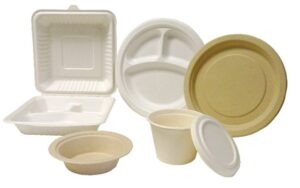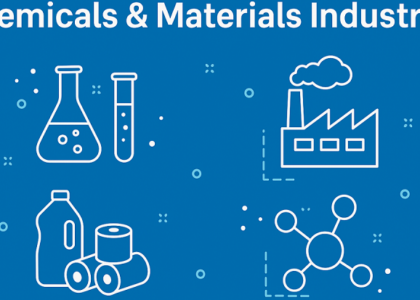
The bagasse packaging market share analysis is poised for a promising trajectory from 2025 to 2035, riding a wave of sustainable innovations and stringent environmental regulations. With a projected CAGR of 6.5%, the market is expected to reach USD 15 billion by 2035.
As consumer awareness of eco-friendly alternatives grows and governments worldwide push for plastic bans, the use of bagasse, a by-product of sugarcane processing, as a sustainable packaging solution is gaining substantial traction.
Bagasse refers to the fibrous residue left behind after sugarcane or sorghum stalks are crushed to extract juice. However, in recent years, bagasse has gained considerable attention due to its potential as an eco-friendly alternative in various industries. Bagasse packaging products are created by processing this fibrous material into a pulp and moulding it into a variety of forms, such as plates, bowls, containers, trays, and more.
Discover Growth Opportunities in the Market – Get Your Sample Report Now
https://www.futuremarketinsights.com/report-sample#5245502d47422d2e3230333339
This packaging material is highly praised for being biodegradable, compostable, and free of harmful chemicals. Unlike plastic, which can take hundreds of years to decompose, bagasse packaging breaks down naturally within a few months, making it an ideal choice for addressing the growing environmental concerns associated with plastic waste.
Rising Demand for Eco-Friendly Packaging Solutions
One of the primary drivers of growth in the bagasse packaging market is the global demand for eco-conscious packaging. Increasing concerns over plastic pollution and carbon emissions have put pressure on industries to adopt biodegradable and compostable materials. Bagasse-based packaging, made from renewable agricultural waste, fits perfectly within this framework.
Key Takeaways From the Bagasse Packaging Market Share Analysis
- North America holds 30% of the Bagasse Packaging market, driven by stricter regulations and a rising demand for eco-friendly products.
- Europe accounts for 25% of the market share, attributed to its leadership in sustainability innovations.
- Asia-Pacific leads with 35% market share, fueled by abundant raw materials and the expanding food service sector.
- Other Regions make up 10% of the market, with emerging markets increasingly adopting sustainable practices.
Market Demand and Driving Factors
The demand for bagasse packaging is being driven by several factors, many of which are tied to the increasing global awareness of environmental issues.
- Environmental Concerns: As plastic pollution continues to be a pressing global issue, companies and consumers alike are actively seeking sustainable alternatives. Bagasse, being biodegradable and compostable, serves as a perfect substitute, reducing the reliance on non-biodegradable plastics.
- Regulatory Pressure: Governments worldwide are enforcing stricter regulations on plastic usage, particularly in packaging. This regulatory push is compelling businesses to look for sustainable alternatives. For instance, the European Union and several countries in Asia are introducing bans on single-use plastic, which is driving the shift towards materials like bagasse.
- Rising Consumer Preferences for Eco-friendly Products: Consumers are becoming more conscious of the environmental impact of the products they use. As a result, there is an increasing preference for brands that offer eco-friendly packaging. Bagasse packaging aligns perfectly with this shift, as it provides a sustainable solution without compromising on quality or functionality.
- Innovation and Product Development: Manufacturers are heavily investing in research and development to innovate and improve the properties of bagasse-based products. The development of new and improved packaging solutions has made bagasse an even more viable option for businesses across various sectors, including foodservice, retail, and consumer goods.
Technological Advancements and Product Innovation
Technological innovation plays a crucial role in expanding the capabilities of bagasse packaging. Manufacturers are investing in material engineering, design flexibility, and production scalability, which is enhancing the strength, heat resistance, and versatility of bagasse-based products. This allows these materials to compete effectively with traditional plastic, paper, and Styrofoam alternatives.
Key Vendor Initiatives
- Ecoware: Innovates compostable packaging for scalability and cost efficiency.
- BioPak: Focuses on affordability and expanding product portfolios.
- Huhtamaki: Invests in smart packaging solutions to enhance customer engagement.
Bagasse Packaging Market Share Analysis Segmentations
By End-Use Industry
- Food and Beverages
- Retail
- Healthcare
By Region
- North America
- Europe
- Asia-Pacific
- Other Regions
About Future Market Insights (FMI)
Future Market Insights, Inc. (ESOMAR certified, recipient of the Stevie Award, and a member of the Greater New York Chamber of Commerce) offers profound insights into the driving factors that are boosting demand in the market. FMI stands as the leading global provider of market intelligence, advisory services, consulting, and events for the Packaging, Food and Beverage, Consumer Technology, Healthcare, Industrial, and Chemicals markets. With a vast team of over 400 analysts worldwide, FMI provides global, regional, and local expertise on diverse domains and industry trends across more than 110 countries.
Contact Us:
Future Market Insights Inc.
Christiana Corporate, 200 Continental Drive,
Suite 401, Newark, Delaware – 19713, USA
T: +1-347-918-3531
For Sales Enquiries: sales@futuremarketinsights.com
Website: https://www.futuremarketinsights.com
LinkedIn| Twitter| Blogs | YouTube


